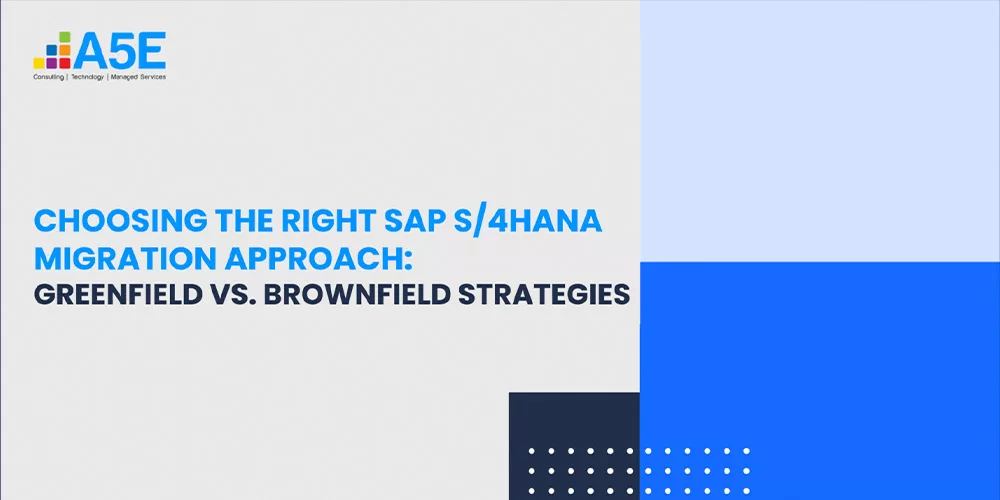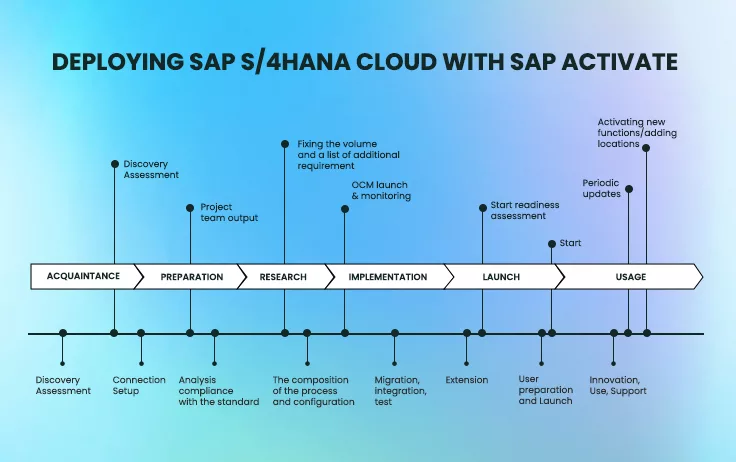
Choosing the Right Sap S/4hana Migration Approach: Greenfield Vs. Brownfield Strategies
SAP S/4HANA is a revolutionary technology that transforms the way businesses operate by replacing complex legacy workflows with high-speed operational insights using in-memory computing. For companies seeking to modernize their SAP landscape and gain a competitive edge, migrating from SAP ERP Central Component to SAP S/4HANA is essential.
Choosing the right migration approach is critical to ensure a smooth transition, with two options available: upgrading the existing system to a new version and migrating data, or migrating from the current version with the help of a third-party service provider. Making the move to SAP S/4HANA accelerates digital transformation and enhances operational performance.

Migration strategies for SAP S/4HANA- Greenfield vs. Brownfield
The process of SAP S/4HANA migration is complex and requires a suitable approach and method. SAP HANA enables the storage and retrieval of data from various sources, including middleware systems and enterprise applications, thanks to its support for structured and unstructured data types. Proper planning, preparation, and execution are essential for achieving success. There are various migration options available, but the two most common approaches for migrating to SAP S/4HANA are:
Greenfield Implementation:
Greenfield implementation is a migration approach to SAP S/4HANA that involves building a new system from scratch. It is an ideal option for companies that have been using an SAP R/3 system for a long time and want to overhaul their existing infrastructure and applications. The approach involves replacing hardware and software to deliver a high-performance environment that enables maximum innovation transformation across SAP-centric systems. By simplifying workflows, decluttering complicated codes, and addressing deep-rooted SAP migration challenges, businesses can reduce Time-to-Value and Total-Cost-of-Ownership through the fast adoption of predefined migration objects.
The most typical benefits of a SAP greenfield deployment are
- Provides a clean slate beginning of the new implementation
- Addresses deep-rooted challenges and declutters complicated workflows and heavily customized codes
- Enables adoption of best practices for process simplification, landscape consolidation, and rationalization of legacy systems
- Unlocks greater operational efficiencies by re-engineered processes, optimal workflows, and enhanced SAP-centric system capabilities
- Allows for greater automation, innovation, and business continuity
However, the Greenfield Approach has some drawbacks. It takes time to get the new system up and running, and the cost of greenfield deployment is higher than brownfield deployment. The main disadvantage of this approach is that it requires a complete assessment, planning, and redesign of business processes.
It is best suited for companies who seek to improve their existing processes and who would like to have add-ons on S/4 HANA, as it provides enhanced capabilities for managing financials, logistics, and other business operations.
Brownfield Implementation:
The brownfield approach is a popular method for upgrading existing SAP S/4HANA systems that have been in use for at least a year. This method allows businesses to take advantage of new features without disrupting current processes. Brownfield migration involves upgrading the hardware and software of an existing system with minimal disruption to the legacy systems. This approach is faster and less expensive than building a new system from scratch.
Advantages of brownfield deployment include:
- Faster deployment times
- Minimal impact on business processes
- Allows for re-evaluation of previous customizations and existing workflows
- Supports selective component picking during the migration from ECC to the SAP S/4HANA platform.
What you need to know when choosing between Greenfield and Brownfield

When deciding between SAP Greenfield vs Brownfield , there are several factors to consider, including budget, timeline, business goals, and IT infrastructure. Greenfield implementation may require more investment, but it can provide more significant long-term benefits, such as increased efficiency and improved business processes. Brownfield implementation may be more budget-friendly and less disruptive, but it may not provide the latest technologies and best practices.
Ultimately, the choice between Greenfield vs Brownfield implementation depends on the company’s unique needs and objectives. A thorough analysis of the existing IT environment, business goals, and budget can help organizations make an informed decision that aligns with their overall strategy.
Conclusion
Choosing the best SAP migration approach depends on your organization’s modernization goals and the level of risk you are willing to take. If you want to start with a brand new system implementation, then the greenfield approach is suitable. It’s important to note that the difference between the greenfield and brownfield approaches is that the former does not require any new application development, and existing applications remain unchanged. In contrast, a brownfield approach involves developing new applications that integrate with your current ERP system, typically through OBIEE. Ultimately, the choice depends on your organization’s unique needs and preferences.
Why Choose A5E?
At A5E, we have extensive experience in both greenfield and brownfield implementations, and our consulting services are tailored to meet the specific needs of each project. Our approach combines specialized process consulting services with cutting-edge technology platforms to enable organizations to become more flexible and responsive in addressing the constantly changing demands of the market.





